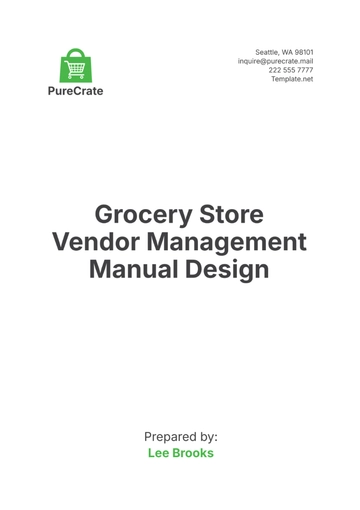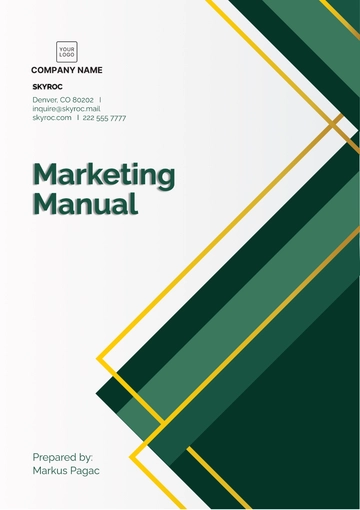Free Cleaning Services Budget Management Manual

I. Introduction
A. Purpose
The purpose of this manual is to establish a standardized framework for the effective management of cleaning services budgets within [Your Company Name]. By implementing the guidelines outlined in this manual, we aim to ensure the optimal allocation of resources while maintaining high standards of cleanliness and sanitation across all facilities.
B. Scope
This manual applies to all departments and personnel responsible for budget planning, execution, and monitoring of cleaning services within [Your Company Name]. It encompasses the processes involved in budget allocation, procurement of cleaning supplies and equipment, contract management, budget monitoring and control, emergency budget management, and staff training related to budget management.
II. Budget Planning
A. Budget Objectives
Ensure cleanliness and sanitation standards are met: The primary objective of budget planning is to allocate sufficient resources to maintain the cleanliness and sanitation of all facilities in accordance with regulatory standards and organizational requirements.
Optimize resource allocation for cleaning services: Budget planning aims to optimize the allocation of financial resources to effectively meet cleaning needs while minimizing unnecessary expenditures.
B. Factors Influencing Budget
Factors | Description |
|---|---|
Size and layout of facilities | The size and layout of facilities, including square footage and number of rooms, directly impact cleaning requirements. |
Frequency of cleaning | The frequency at which cleaning services are required varies depending on factors such as foot traffic and usage patterns. |
Types of surfaces | Different types of surfaces require different cleaning methods and products, influencing budgetary considerations. |
Cost of cleaning supplies | The cost of cleaning supplies, including chemicals, equipment, and consumables, directly affects the cleaning services budget. |
C. Budget Allocation Process
Analyze historical data and current needs: Review past expenditures and assess current cleaning requirements to inform the budget allocation process.
Consultation with department heads: Collaborate with department heads to identify specific cleaning needs and prioritize allocation of funds accordingly.
Allocate funds based on needs and resources: Allocate budgetary resources based on the identified cleaning needs, considering available financial resources and organizational priorities.
III. Budget Execution
A. Procurement of Cleaning Supplies and Equipment
Obtain quotes from approved vendors: Solicit quotations from pre-approved vendors for cleaning supplies and equipment to ensure competitive pricing and quality.
Supplier Selection Criteria: Consider factors such as price, quality, reliability, and delivery times when selecting suppliers.
Procurement Process: Follow [Your Company Name]'s procurement policies and procedures to acquire necessary cleaning supplies and equipment within budget constraints.
B. Contract Management
Review Existing Contracts: Review current cleaning service contracts to ensure compliance with terms and identify opportunities for cost optimization.
Contract Negotiation: Negotiate contract terms with cleaning service providers to secure favorable pricing and service levels.
Performance Monitoring: Monitor the performance of cleaning service providers to ensure adherence to contractual obligations and budgetary constraints.
IV. Budget Monitoring and Control
A. Tracking Expenses
Expense Recording: Maintain accurate records of all cleaning-related expenses, including supplies, equipment, and contracted services.
Budget Comparison: Regularly compare actual expenses against budgeted amounts to identify any discrepancies or variances.
Variance Analysis: Investigate and analyze variances to determine the reasons for deviations from the budget and take corrective actions as necessary.
B. Cost Reduction Strategies
Efficiency Measures: Implement measures to improve efficiency in cleaning processes and reduce costs without compromising quality.
Vendor Optimization: Explore opportunities to consolidate vendors or negotiate better terms to achieve cost savings.
Waste Reduction: Minimize waste of cleaning supplies and resources through proper inventory management and usage controls.
C. Reporting
Budget Reports: Generate regular reports detailing budget performance, including actual expenses, variances, and explanations for discrepancies.
Management Review: Present budget reports to management for review and decision-making on corrective actions or adjustments to the budget.
Stakeholder Communication: Communicate budget status updates and recommendations to relevant stakeholders to ensure transparency and alignment.
V. Emergency Budget Management
A. Contingency Planning
Develop contingency plans for unexpected cleaning needs: Identify potential scenarios that may require additional cleaning services beyond the scope of the regular budget. Develop strategies and protocols to address these situations effectively.
Allocate emergency funds in the budget for unforeseen expenses: Set aside a portion of the budget as contingency funds to cover unexpected cleaning needs or emergencies.
B. Crisis Response
Activate emergency protocols in the event of a crisis requiring additional cleaning services: Mobilize resources and personnel according to established emergency response procedures to address urgent cleaning needs.
Prioritize allocation of resources to address urgent cleaning needs: Allocate emergency funds and resources to areas with the highest priority for cleaning and sanitation to mitigate risks and ensure safety.
VI. Training and Compliance
A. Staff Training
Provide training on budget management principles and procedures: Educate staff members involved in cleaning services on the importance of budget adherence, cost-consciousness, and proper financial procedures.
Training Delivery Methods: Utilize a variety of training methods, including workshops, presentations, and online modules, to ensure effective communication of budget management principles.
B. Compliance with Policies and Regulations
Ensure compliance with relevant regulatory requirements related to budget management: Stay informed about industry regulations and standards governing financial management practices and ensure adherence to these guidelines.
Adhere to [Your Company Name]'s internal policies and procedures for financial management: Familiarize staff with organizational policies and procedures related to budget planning, execution, and monitoring to ensure consistency and compliance.
VII. Glossary of Terms
Budget: A financial plan outlining anticipated revenues and expenditures for a specific period, typically used to allocate resources efficiently.
Variance: The difference between budgeted amounts and actual expenses, used to assess budget performance and identify deviations.
Contingency Planning: The process of preparing for unforeseen events or emergencies by developing strategies and allocating resources to address potential risks.
Compliance: Adherence to laws, regulations, and organizational policies governing budget management and financial practices.
- 100% Customizable, free editor
- Access 1 Million+ Templates, photo’s & graphics
- Download or share as a template
- Click and replace photos, graphics, text, backgrounds
- Resize, crop, AI write & more
- Access advanced editor
Discover the Cleaning Services Budget Management Manual Template on Template.net. This editable and customizable manual equips you with the tools to effectively manage your cleaning business's budget. From expense tracking to revenue forecasting, streamline your financial processes with detailed guidelines and best practices. Use our Ai Editor Tool to tailor the manual to your company's specific needs. Take control of your cleaning service's finances and drive profitability with this comprehensive template.





























